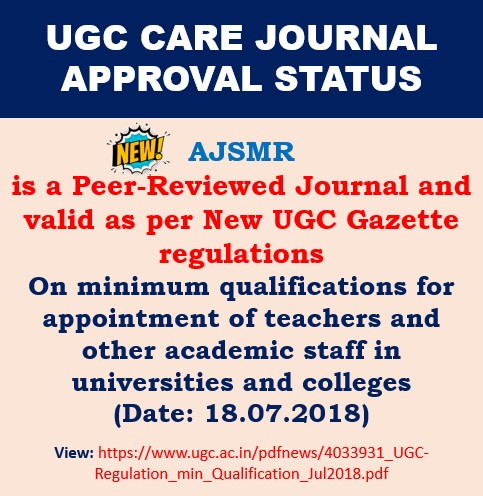Original Research Article I Volume 3 I Issue 4 I 2017
Influence of ß-Asarone on the Growth and Development of Corcyra cephalonica (Lepidoptera: Pyralidae)
Madhavi. M, Babu Rao. G, Srinivas
The American Journal Science and Medical Research; 3(4); 19-23
DOI:http://dx.doi.org/10.17812/ajsmr3405
Abstract:
The sweet flag Acoruscalamus L (vernacular: Bach) is a perennial herb belonging to the family Araceae. The main constituents of Acoruscalamus L, is β-asarone.β-Asaroneexhibits a broad range of biological activities. It is an insect growth regulator, we observed the effect of different concentrations (2, 4, 6, 8 and 10 μg / μl doses) of β-Asarone on the growth and development of Corcyra cephalonica, in our observations various morphological abnormalities like deformation and degeneration were observed in the larval and pupal stages. The untreated Corcyra cephalonica showed normal in the developmental stages with the larval instar stages and henceforth developimg into pupa without any deformities. However β-Asarone affected larval instars showed disrupted structures of the cuticle like tanning of cuticle and abnormal larvae over-aged larva with either complete or partial damage of pupa. The results demonstrated that β-Asarone causes rapid cessation of growth due to disruption of larval structure and inhibition of growth following topical treatment on 4th 5th instar and pupae of Corcyra cephalonica.
Keywords:
β-Asarone, Corcyra cephalonica, Larvae, pupa
References:
1. Basu, N.K. and Lamsal, P.P. (1947). Investigations on Indian medicinal plants-II. Hydrocotyleasistica. Quart. J. Pharm. Pharmacol. 20:135-136.
2. Bell, A., L.E. Fellows and S.J.Simmonds, (1990). Natural products from plants for the control of insect pests. In: Safer insecticide development and use. Hodgson, E and R. J. Kuhr (eds.), Marcel. Dekke, USA
3. Balasubrmanian R, Selvaraj P, Sahayaraj K. Partial Purification and characterization of phytoecdysone from Chrystella Parasitic (L) and screening its pesticidal properties on lepidopteran pest. J. Biopesticides. 2008; 1(2): 201-205.
4. Chanbang Y, Arthur FH, Wilde GE , Throne JE, Subramanyam BH. Susceptibility of eggs and adult fecundity of the lesser grain borer, Rhyzoperthadominica, exposed to methoprene. J. Insect Sci. 2008; 8: 1–5.
5. Fathpour H, Mir T. Effects of juvenile hormone, pyriproxyfen, on German cockroach (Dictyoptera: Epilampridae; Blattellagermanica). Research Bulletin of Isfahan University. 2003; 17(1): 87-102.
6. Gaikwad SM, Muniv YS, Chavan JA, Bhawane GP. (2011), Population Density and Natural Enemies of PapiliopolytespolytesL., (Lepidoptera: Papilionidae), Biological Forum-An International Journal. 2011; 3(1): 41-43.
7. Hami M, Taibi F, Soltani-Mazouni N. Effects of flucycloxuron, chitin synthesis inhibitor on reproductive events and thickness of chorion in mealworms. Commun. Agric. Appl. Biol. Sci. 2004; 69 (3): 249–255
8. Hermawan W, Kajiyama S, Tsukuda R, Fujisaki K, Kobayashi A, Nakasuji F. Antifeedant and antioviposition activities of the fractions of extract from a tropical plant, Andrographis paniculata (Acanthaceae), against the diamondback moth, Plutellaxylostella(Lepidoptera: Yponomeutidae). Appl.Entomol. Zool. 1994; 29:533–538.
9. Hoffmann KH, Lorenz MW. The role of ecdysteroids and juvenile hormones in insect reproduction. Trends in Comparative Biochemistry and Physiology.1997; 3: 1-
10. Indrasith LS, Sasaki T, Yaginuma T, Yamashita O. The occurrence of premature form of egg-spesific protein in vitellogenic follicles of Bombyxmori. J. Comp. Physiol. 1988; 158 (1): 1–7.
Article Dates:
Received: 29 November 2017 ; Accepted: 27 December 2017 ; Published: 31 December 2017
How To Cite:
http://dx.doi.org/10.17812/ajsmr3405 Received :29 November, 2017 Accepted; 27 December, 2017 Available online : 31 December, 2017



